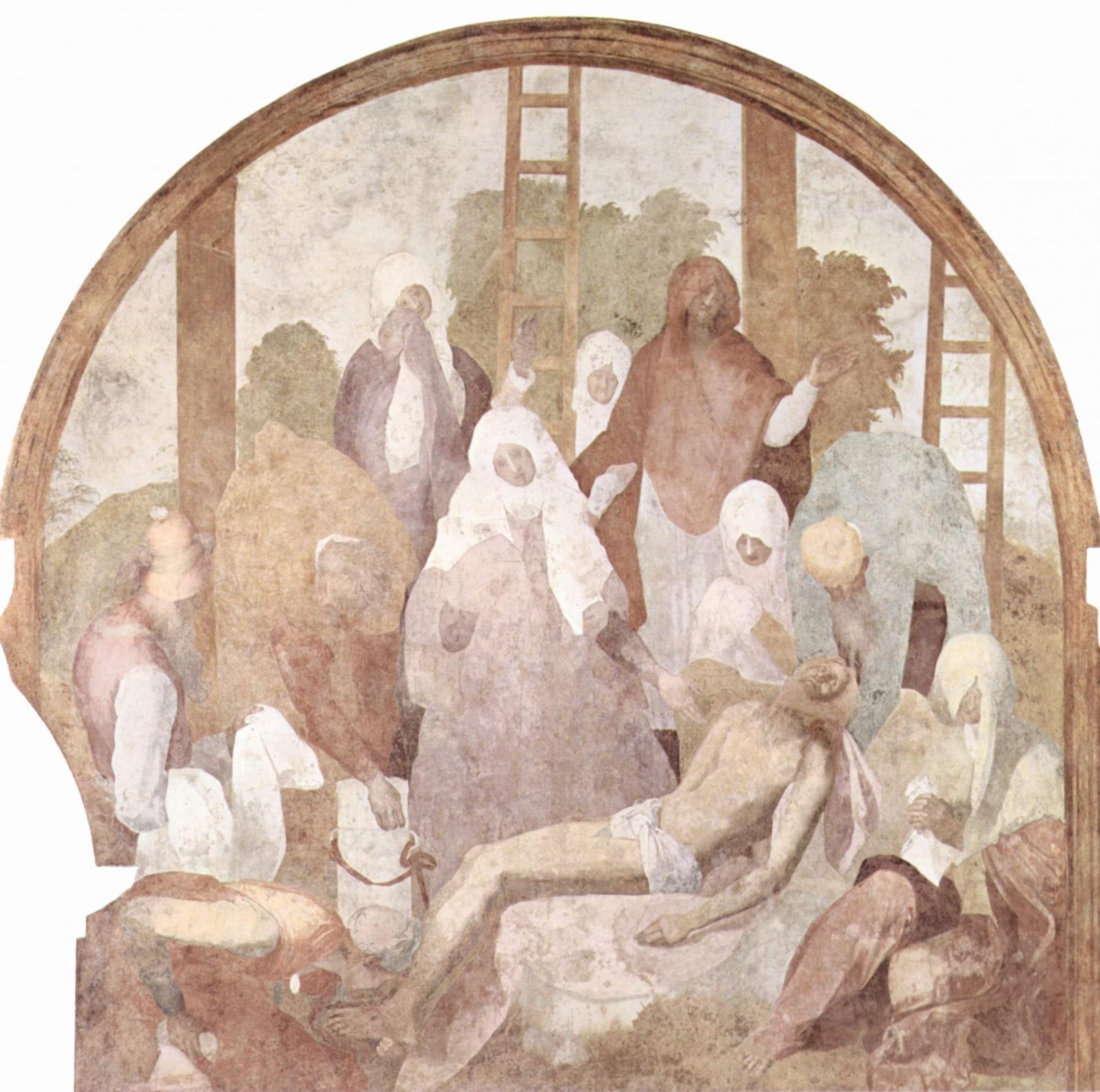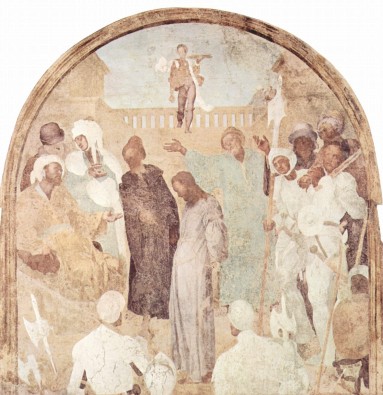We went to Galluzzo, to the Certosa there. An old monk whose eyebrows were like brushes brought us in. It was late afternoon. Gray light fell on old stone. The view from up there was as it is in the illustration on a wine bottle: terraced green hills, grown over with vines and olive trees. Battlements and ancient stone buildings too, imprecise in the distance.
We’d cut short our purchase of grappa at the cloister’s liquor shop to join the guided tour. Who needs tours? But the Certosa offered no other option, no opportunity to wander through the large halls alone. We tailed the monk.
He was one of four who lived there now. They were Cistercian. The monastery had changed orders a few decades ago, after centuries of being Carthusian. Our monk spoke a rapid Italian, not long enough in front of the interesting pictures, too long in front of the uninteresting ones.
We stood in turn in front of each of five large fading frescoes. The artist was Jacopo Pontormo. Going now, almost gone, overtaken by time. The series was the Passion of the Christ. The charterhouse is a few miles from the middle of Florence, on the way to Siena. Why had Pontormo come here? To escape the plague. The year was 1522.
Among the Carthusians, who had taken vows of silence, young Pontormo—whom Vasari, in Le Vite, says was neurotic and moody, but that could be Vasari’s jealousy talking—painted in silence.
In the dying colors is an intensity equal to that in any finished work. Only echoes are there now, but suggestive echoes, of Pontormo’s crazed hues, the sulfurous yellows, the pistachio, the fuchsia, the copper, like Perugino on mushrooms. What remains: the grace of his disegno; the limber bodies from which some dangerous sensuality is never far; the masses of undifferentiated pigment containing one body or the other; the reminder that gesture is an art at times more resonant than detail; the connection between line and breath. The various cowled figures in the Lamentation keep their grief or darknesses implicit. Christ accused is stillness personified. He wears a robe a pale eggplant in color. Above him—the kind of satisfyingly weird touch of which Pontormo was master—a servant boy wanders in, seemingly from backstage at an Armani show. Beauty and style and sorrow.
The loquacious old monk hurried us along to less potent things. Footfall on the flagstones. But I lagged behind, heard Pontormo crossing the years between 1522 and now, barely audible over the static of time, like the faraway voice that sings on the radio when you’re driving on a hillside and there’s poor reception and a news report from some other station keeps cutting in but you can still make out the line of the song. Nothing better, nothing more moving, this natural pleasure that accrues in the modest and underplayed.

